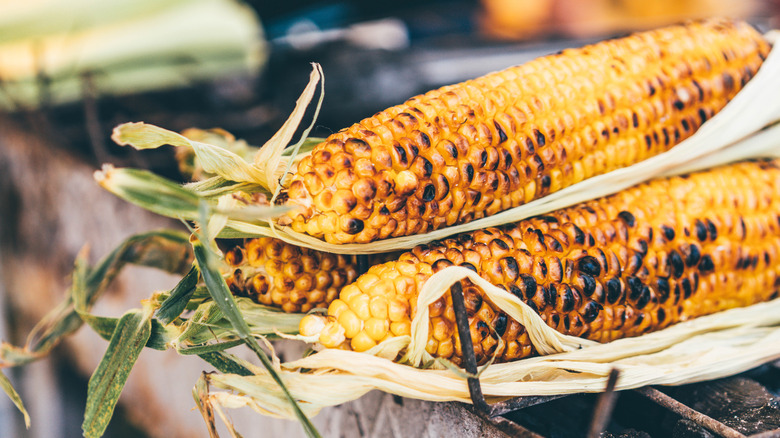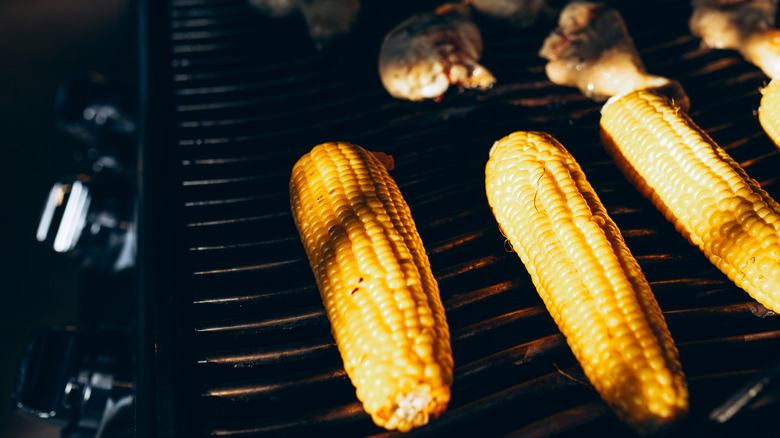We Asked A BBQ Expert How To Actually Grill The Perfect Corn On The Cob
Ask any 10 people the right way to cook corn on the cob, and you're likely to get 11 different answers. You can boil it, steam it, microwave it, or even bake corn on the cob in the oven — and of course, there's always going to be someone who insists you make corn on the cob in an air fryer or instant pot. If you're already grilling your entree, though, it makes perfect sense to toss a few ears of corn on the barbecue, too. Scott Thomas blogs about barbecued meats at The Grillin' Fools, but he also knows a thing or two about grilled vegetables. The way he sees it, "There are two ways of cooking corn on the grill. Leaving the corn in the husk or grilling it naked (the corn, not the pitmaster)."
If you do grill your corn with the husks on, you'll first need to soak it for at least an hour. The reason, Thomas explains, is to avert a possible disaster: "If not [soaked], the husks will dry out while cooking and almost certainly catch on fire. Dried corn husks burn hot and fast; large flames that burn out quickly, but could be very dangerous." He also advised snipping off the silks that poke out the top, since they're still flammable even after soaking. While Thomas cooked his corn this way for many years, he says he's now against grilling corn in the husks because removing those hot husks was kind of a pain. "To save my hands by trying to remove hot husks from hot corn, now I husk the corn before cooking." Any stray bits of silk, he said, won't pose a fire risk since they'll turn to ash immediately.
Two-zone grilling is the key to perfect corn on the cob
Once you've settled the question of whether to grill your corn in the husk or out of it, you've still got to figure out how to cook the corn. Scott Thomas recommends, "Use two-zone or indirect grilling, which is hot coals on one side of the grill and a cool side with no direct heat." The hot side, he said, should be anywhere from 300 to 350 degrees Fahrenheit, and the corn should be placed right over the coals or burner. (If the heat is higher, move the ears off to the sides.)
As Thomas describes the cooking process, "All we are looking for is some charring. Brown the kernels a bit and rotate the ear a few degrees to get a little more browning on a naked ear of corn. Rotate, char, rotate char." Once the char is achieved, move the ears to the indirect heat so they can stay warm without burning. Even if you're cooking corn in the husks, Thomas says the technique remains the same: "Brown the husk around the outside, and once all the ears are browned around the outside, slide each one over to the side of the grill with no direct heat."
One thing Thomas does not advise doing is seasoning or greasing the corn before cooking. "Any oil or butter will run right off into the fire, which will immediately ignite," he warns. And as far as your standard salt-n-pepper combo, he says, "Seasonings won't really stick to the kernels without a binder like butter or oil. It's better to add all of this after the corn leaves the heat."

